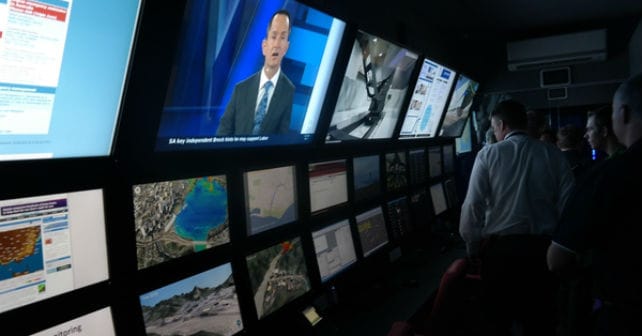'Serious' error in CO2 accounting rules could lead to deforestation
 Researchers have uncovered a serious error in the accounting rules used to calculate the impact of biofuels on greenhouse gas emissions.
Researchers have uncovered a serious error in the accounting rules used to calculate the impact of biofuels on greenhouse gas emissions.
While “readily fixable,” the error — if left uncorrected — could encourage even more deforestation than is already taking place around the globe. The error affects not only the Kyoto Protocol, but the European Union’s Emissions Trading System and the climate bill recently approved by the US House of Representatives.
The problem lies with a rule that exempts the carbon dioxide emitted by bioenergy, regardless of the source. That makes it possible to clear forests and use the biomass to generate energy, a potentially cheap but damaging way in which companies could say they’re reducing greenhouse gas emissions as they face tighter pollution limits.
“The error is serious, but readily fixable,” said Timothy Searchinger, a research scholar and lecturer in public and international affairs at Princeton University’s Woodrow Wilson School and at the Princeton Environmental Initiative.
According to a number of studies, including one by a US Department of Energy lab, applying this incentive globally could lead to the loss of most of the world’s natural forests as carbon caps tighten.
It’s critical that the error be corrected before climate negotiators meet in Copenhagen this December to hammer out a successor to the Kyoto Protocol, according to the research team that uncovered the mistake.
“As we approach the most important climate treaty negotiations in history, it is vital that technologies, such as biofuels, that are proposed as solutions to global warming, are properly evaluated,” said team member Daniel Kammen, a University of California, Berkeley, professor of energy and resources and of public policy, and director of the campus’s Renewable and Appropriate Energy Laboratory and the Transportation Sustainability Research Center. “Our paper builds on recent work on the direct and indirect land use impacts of biofuels, and clarifies how the accounting should be done.”
The burning of bioenergy and fossil energy releases comparable amounts of carbon dioxide from tailpipes or smokestacks, but bioenergy use may reduce emissions overall if the biomass results from additional plant growth. This is because plants grown specifically for bioenergy absorb carbon dioxide from the atmosphere, which offsets the emissions from the eventual burning of the biomass for energy.
On the other hand, burning forests releases stored carbon into the atmosphere in the same way as burning oil releases carbon stored for millions of years underground. For these reasons, the greenhouse gas consequences of using bioenergy vary greatly with the source of the biomass.
In their Oct. 23 article in Science, the research team explains that the error stems from a misapplication of guidelines established by the Intergovernmental Panel on Climate Change (IPCC) at the time of the Kyoto Protocol.
According to the IPCC, exempting carbon dioxide from bioenergy use is appropriate only if an accounting system also counts emissions from clearing land and other land use activities. However, the exemption is inappropriate for laws and treaties that do not legally limit emissions from deforestation and other land use activities. Neither the protocol, nor the existing or proposed climate legislation in Europe and the US, apply limits to emissions from land use. Because these laws nevertheless exempt all emissions from bioenergy use, the IPCC warns, they can therefore create large, perverse incentives to clear land.
This error in the system for administering carbon caps is distinct from other laws that require minimum quantities of biofuels. Many of these other laws do account for at least some of the emissions from land use activities.
According to the authors, the solution is to count all emissions from energy use, whether from fossil fuels or bioenergy, and then to develop a system to credit bioenergy to the extent it uses biomass derived from “additional” carbon sources, and thereby offsets energy emissions.




